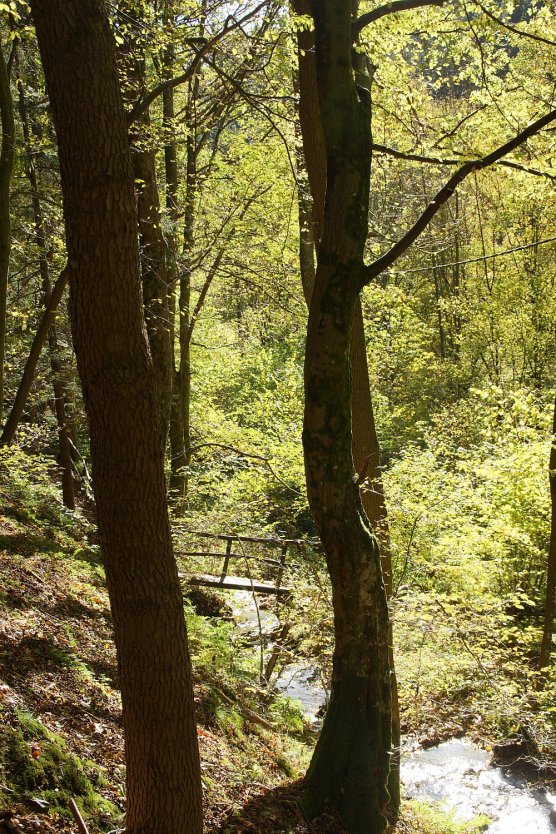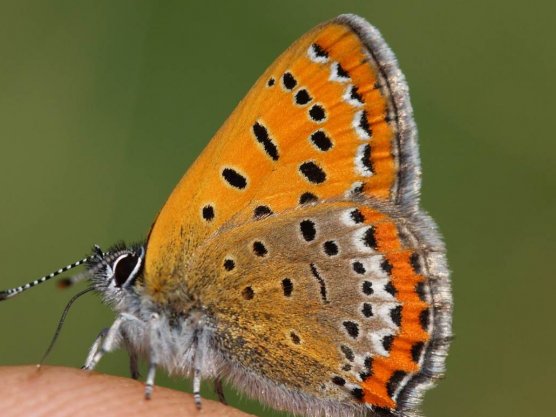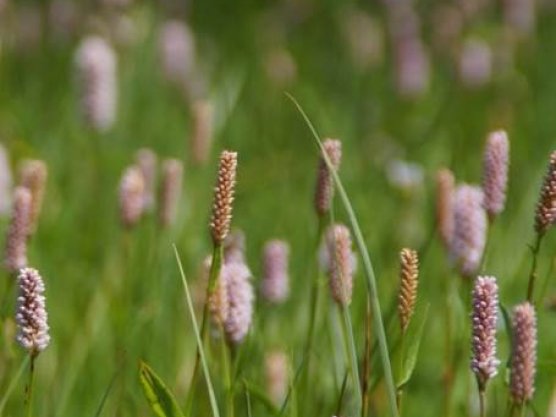
Development of a habitat network for the Violet Copper

The Project
On January 1, 2017, the EU nature conservation project "Patches & Corridors" was launched by the Biological Station StädteRegion Aachen e.V.. Under the umbrella of the EU funding title LIFE, it is one of 38 other LIFE projects launched throughout Europe this year. The project aims to promote endangered species and habitats in a number of protected areas in the Northern Eifel.
The main species of the project is a butterfly endangered throughout Europe, the Violet Copper (Lycaena helle). In the region of Monschau/Simmerath we can find quite a few populations and thanks to nature conservation activities they are in a good conservation status. However, these populations exist often very isolated from each other, there is no exchange of butterflies between their habitats. In the medium term this will be a problem. First for individual sub-populations and in the end for the entire community. The LIFE project will develop and optimise stepping stone biotopes and dispersion corridors in accordance with its title. In other words, existing wetlands and alluvial forests are managed in an appropriate manner and habitats unsuitable for local nature are restored. Many native and rare plant and animal species of the floodplain such as the beaver (Castor fiber) or the black stork (Ciconia niger) benefit from this.
LIFE - the EU’s financial instrument supporting nature conservation
The European financial instrument LIFE (L`Instrument Financier pour l`Environment) exclusively supports environmental protection concerns. The aim is to promote the development and implementation of environmental policy and legislation in the EU. The integration of environmental aspects into other policy areas and sustainable development in the Union should be facilitated. This support implements and develops the Natura 2000 European network of protected areas and promotes and protects species and habitats of Community importance.
NATURA 2000 is the coherent network of European protected areas consisting of Fauna-Flora-Habitat sites (FFH sites, Council Directive 92/43/EEC of 21 May 1992 on the conservation of natural habitats and of wild fauna and flora) and bird reserves (VSG, Council Directive 79/409/EEC of 2 April 1979 on the conservation of wild birds). The aim is to protect typical, special, rare and endangered habitats, animal and plant species in Europe. The member states of the EU have a responsibility to preserve typical natural landscapes and biological diversity. In Germany, for example, approximately 14% of the country's surface area and 31% of its marine area are registered as Natura 2000 sites.


Objectives
- Connectivity of existing and potential biotopes of the Violet Copper by
- Developing, increasing and improving natural alluvial wood and openland habitats e.g. alluvial forests, bog forests, mountain hay meadows and hydrophilous tall herb fringe communities.
- Protection of existing but yet not legally protected populations of the Violet Copper by land purchase
- Establishment of a habitat management scheme in existing and potential habitats of the Violet Copper, taking into account the special ecological needs of the species
- Control of invasive alien plant species to protect the natural species structure of both, hydrophilous tall herb fringe communities and alluvial forests, by elimination of the Himalayan Balsam (Impatiens glandulifera).

Facts & Figures
Title: „LIFE Patches & Corridors“ LIFE 15 NAT/DE/000745
Duration: January 2017 to December 2022
Total budget: about 2,45 million euros
Project management: Biological station StädteRegion Aachen e.V.
Project partner: The Ministry for Environment, Agriculture, Conservation and Consumer Protection of the State of North Rhine-Westphalia
Co-financer: StädteRegion Aachen



